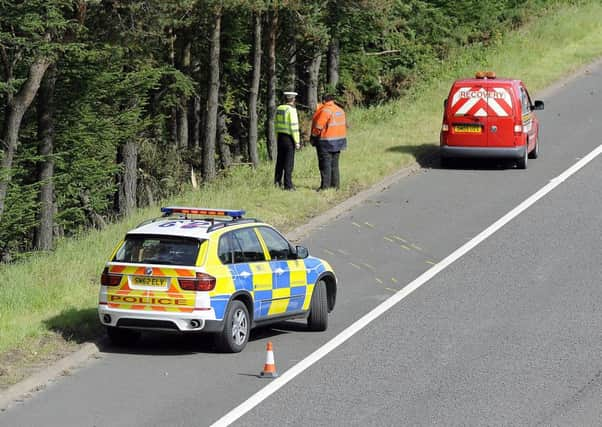Chris Marshall: Police Scotland's control room crisis shows no sign of easing


The couple’s deaths – the result of a car crash which police failed to find until three days after it happened – were undoubtedly the low point in the troubled early years of the national force.
An initial call from a member of the public about the incident was not properly logged and officers did not find the vehicle until Mr Yuill, 28, was dead. Ms Bell, 25, died later in hospital.
Advertisement
Hide AdAdvertisement
Hide AdBut despite huge efforts being made to address the failings of Police Scotland’s control rooms, there an indications that problems remain.
A report published yesterday by HM Inspectorate of Constabulary in Scotland (HMICS) found the situation improving, but pointed to a range of concerns.
HMICS said 98 “notable incidents” had taken place between April and November last year, the majority down to individual error.
Thirty-six of those arose from 999 calls, while 52 related to calls to the non-emergency 101 number. The remainder arose from e-mail contacts or direct contact via partner agencies such as the ambulance service.
While a plan has been put in place to deal with such incidents, the report said a number remained “open” and unresolved for months, with many only closed in the weeks before the review took place.
It also noted a “culture of blame” attached to mistakes and said one member of staff had been responsible for three mistakes and involved in a fourth before consideration was given to an improvement plan.
The problems are highlighted despite warnings from HMICS as far back as November 2015 – four months after the M9 crash – that Police Scotland had “inadequate” oversight of controversial changes to its control rooms.
The 2015 HMICS report highlighted a number of weaknesses in the roll-out of Police Scotland’s national call handling model, which included a reduction in the number of force control rooms.
Advertisement
Hide AdAdvertisement
Hide AdIt also found examples of handlers being under pressure to end calls quickly and the grading of calls being dependent on the resources available.
Figures published in December showed there had been more than 80 “near misses” recorded in police call centres since April.
The details, which were obtained by the BBC, showed staff had mishandled 999 and 101 calls involving road traffic accidents, domestic abuse, assault, self-harm, and vulnerable children and adults.
Police Scotland said the incidents accounted for only one in every 22,500 calls.
But while the national force is right to highlight the relatively low number of mistakes, the case of Mr Bell and Ms Yuill shows just how catastrophic such mistakes can be.
It is hard to shake the notion that the closure of control rooms and the shedding of staff was as much to do with finances as anything else.
Police Scotland will argue the streamlining of its control rooms is something which would have happened anyway following the move from eight regional forces to a national structure in 2013.
But there continues to be worrying evidence that Police Scotland’s call centres are struggling to deal with the amount of work coming their way.